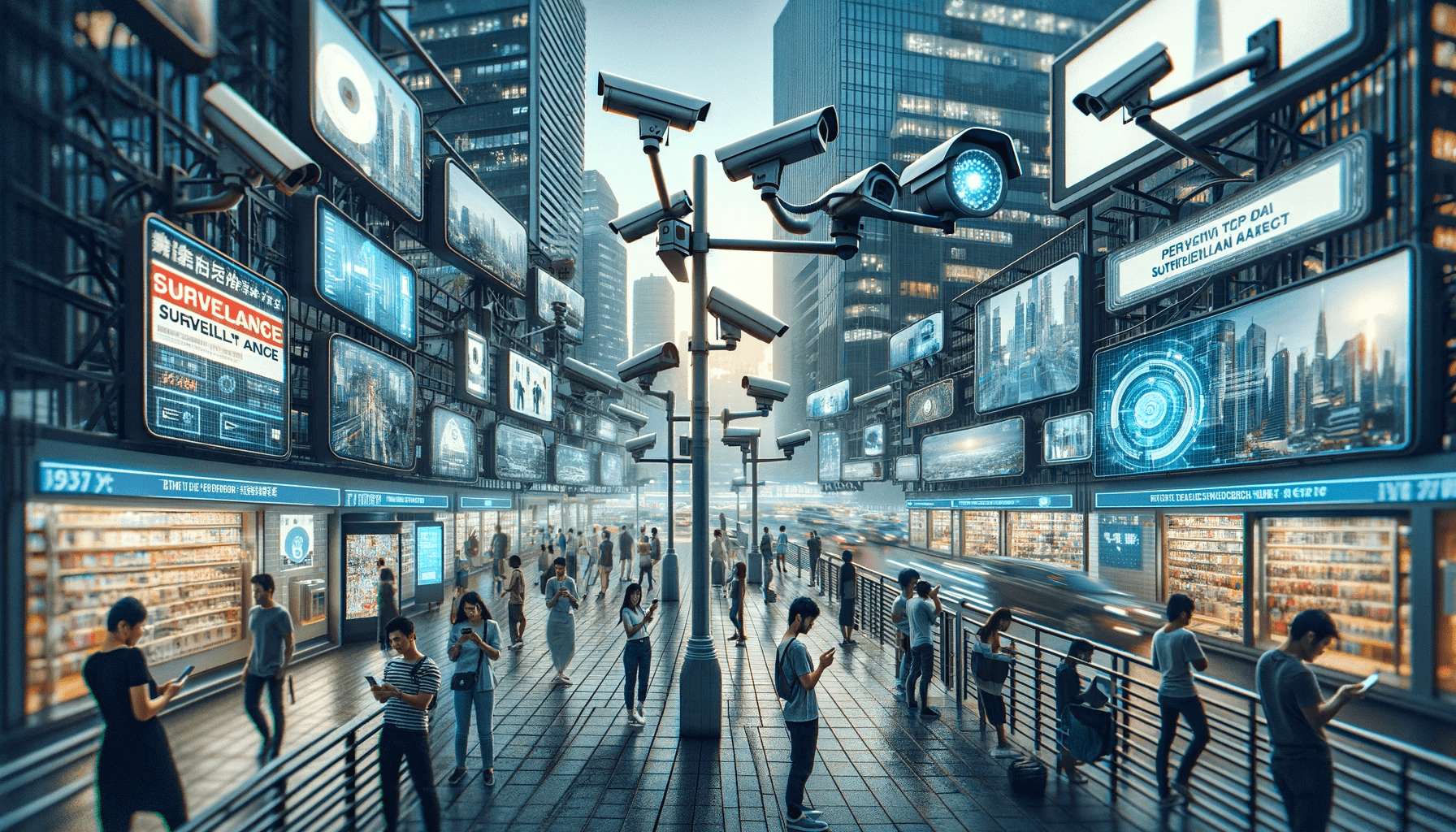Explore ARGs with my custom GPT AI, specialized in creating immersive, educational games that bring history and art to life in museums.

Navigating Digital Surveillance and Privacy
In this exploration of Digital Surveillance and Privacy, we delve into how our personal freedoms are impacted by the ever-watchful eyes of modern technology.
In an era reminiscent of Orwell’s “1984” and Gibson’s “Neuromancer“, we live amidst a digital landscape where surveillance is not just a possibility, but a pervasive reality. Consequently, this post explores the transformation from literary dystopias to our current world, where privacy often feels like an elusive mirage, and the ethical, social, and technological implications of this shift.
From fiction to reality
“1984” and “Neuromancer” are no longer mere fiction; they are poignant reflections of the challenges in digital surveillance and privacy we face today. Moreover, Orwell’s concept of “Big Brother” eerily echoes in our world of CCTV cameras and internet monitoring, while Gibson’s cyberpunk future finds parallels in our advancements in neural implants and biometrics. Similarly, these literary masterpieces, once considered futuristic, now reflect our present, blurring the lines between the human psyche and technology.
Ethical and social implications
The ethical implications of digital surveillance and privacy has profound ethical ramifications. Firstly, it risks the suppression of dissent and the manipulation of behaviors, disproportionately affecting marginalized communities. Additionally, our public and private lives are monitored through algorithms and technologies that remain largely invisible, echoing the warnings of authors like Shoshana Zuboff and Bruce Schneier. Zuboff’s “surveillance capitalism” and Schneier’s “surveillance-industrial complex” paint a stark picture of the current landscape, where data is not just collected but used to predict, influence, and sometimes control behavior.
The Digital Panopticon: Surveillance and Privacy in the Digital Age
Our reality increasingly resembles a digital panopticon, with companies and governments wielding the power to monitor and influence. Facial recognition, location tracking, and predictive analytics are tools in this surveillance arsenal. Furthermore, these technologies, as Cathy O’Neil and Joseph Turow highlight, often encode biases, leading to a digital divide in services and opportunities. This surveillance extends to retail spaces, as Turow describes, where our movements and purchases are meticulously tracked and cataloged.

Social Media and Digital Surveillance: The Modern Privacy Manipulator
Social media platforms, critiqued by thinkers like Jaron Lanier, exploit psychological vulnerabilities to compel user engagement, leading to addictive behaviors and eroding personal autonomy. In particular, Lanier’s arguments for deleting social media accounts resonate more than ever in a world where our online interactions are constantly monitored and monetized.
The inevitability of surveillance?
Julia Angwin’s “Dragnet Nation” experiment reveals the daunting challenge of evading surveillance in our digital age. This brings forth an unsettling question: Is total surveillance inevitable? The path we’re on suggests a future where privacy is not just compromised but entirely redefined.

Empowering the individual: steps towards privacy
While the landscape seems daunting, there are steps individuals can take to reclaim some privacy. Limiting data sharing, using privacy-focused tools, and staying informed about legislation are small but significant actions. However, systemic solutions are also essential. We need collective action and policy reforms to balance the power between individuals and the entities that surveil.
-
Reducing Your Digital Footprint in the Age of Digital Surveillance and Privacy
- Minimize sharing personal information on social media and online platforms.
- Regularly update privacy settings to control data sharing.
- Use VPNs and secure communication apps like Signal for enhanced privacy.
- Employ browser extensions to block online trackers.
- Conduct digital footprint audits to understand your online presence.
-
Biometric Data Protection: Navigating Digital Surveillance and Privacy Concerns
- Exercise caution in the use and storage of biometric data, opting out where possible.
-
Legislative Awareness and Advocacy
- Stay informed about local and global privacy laws, like the EU’s GDPR.
- Support privacy-protecting legislation and participate in public discussions on digital rights.
- Engage with digital rights organizations to advocate for privacy reforms.
-
Tech Literacy and Vigilance
- Educate yourself about the workings of surveillance technologies such as facial recognition.
- Monitor emerging technologies that could impact privacy, like advanced surveillance systems and drones.
-
Mental Health Considerations
- Recognize and manage stress related to privacy concerns and constant surveillance.
- Seek support and engage in activities that promote mental well-being.
-
Community Engagement and Education
- Participate in community workshops and digital literacy programs to foster a culture that values privacy.
- Share knowledge and resources to help others understand and protect their digital privacy.
-
Systemic Solutions and Collective Action
- Advocate for comprehensive policy reforms addressing data rights and surveillance.
- Engage in collective efforts to push for ethical standards in technology development and usage.
Conclusion
The intersection of technology, literature, and surveillance paints a complex picture of our current society. As we navigate this digital age, it’s crucial to remain aware of the power dynamics at play and advocate for a future where privacy and autonomy are not just preserved but prioritized. Let’s take inspiration from the literary warnings of the past to shape a more equitable and privacy-conscious future.



